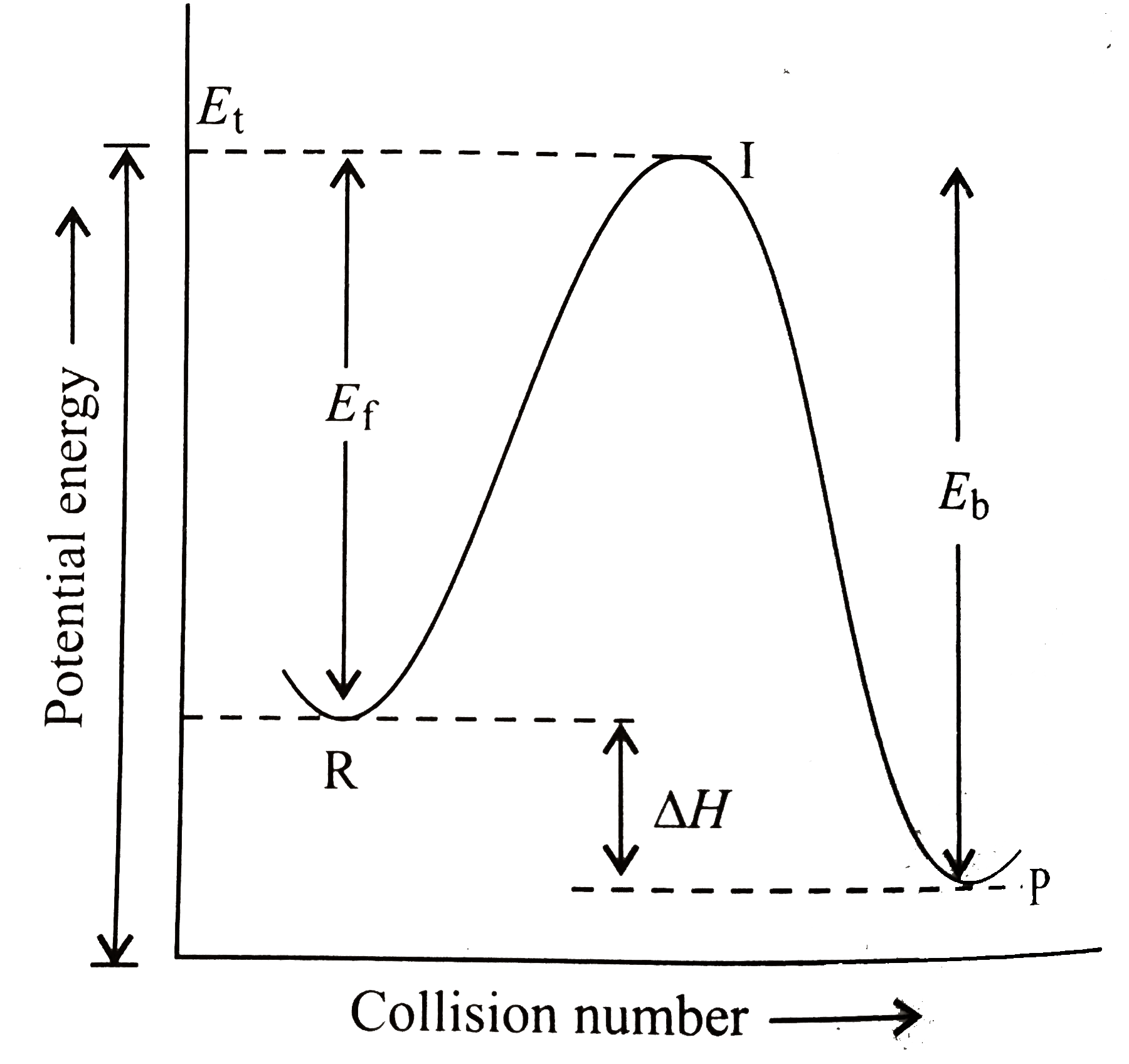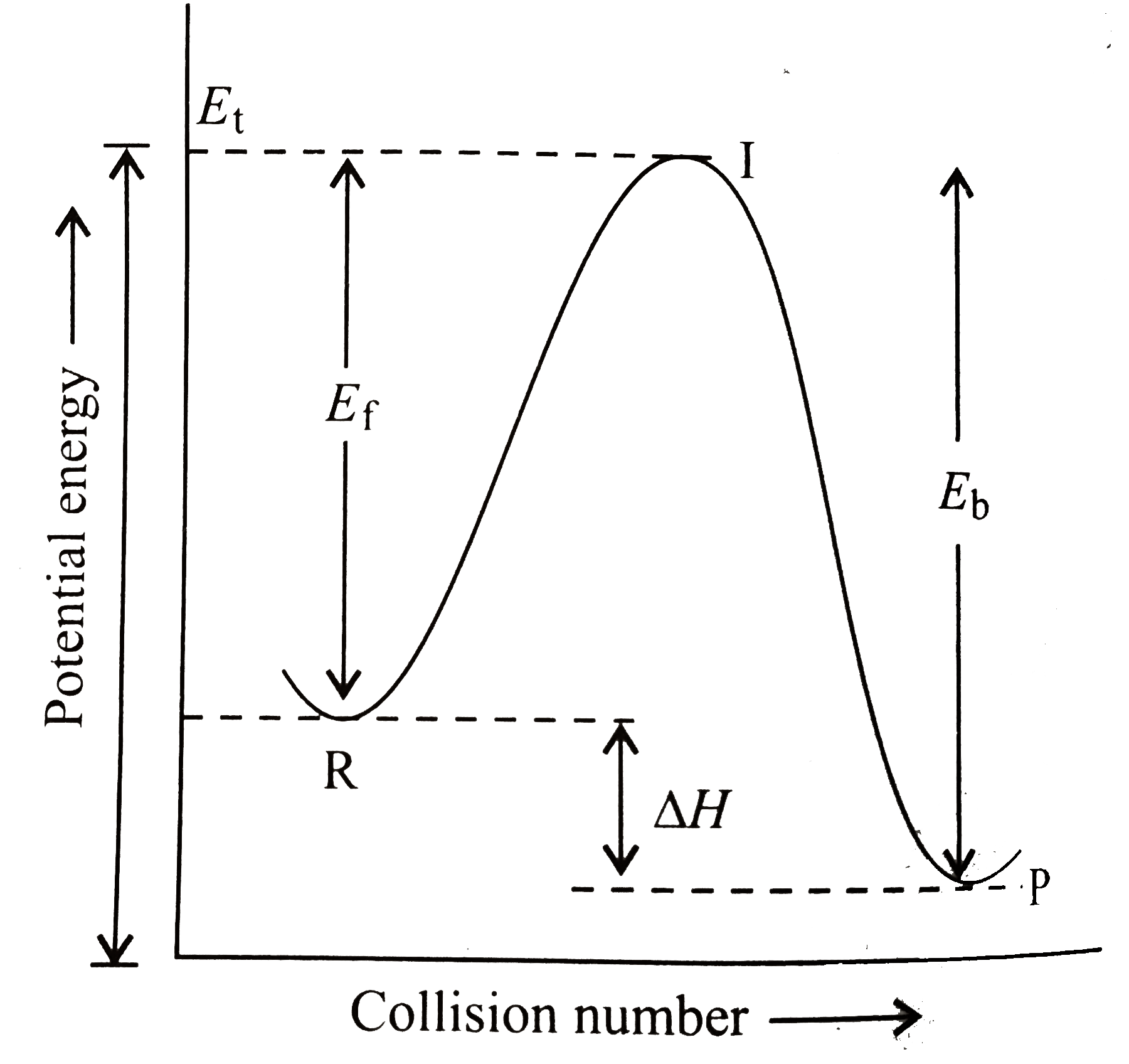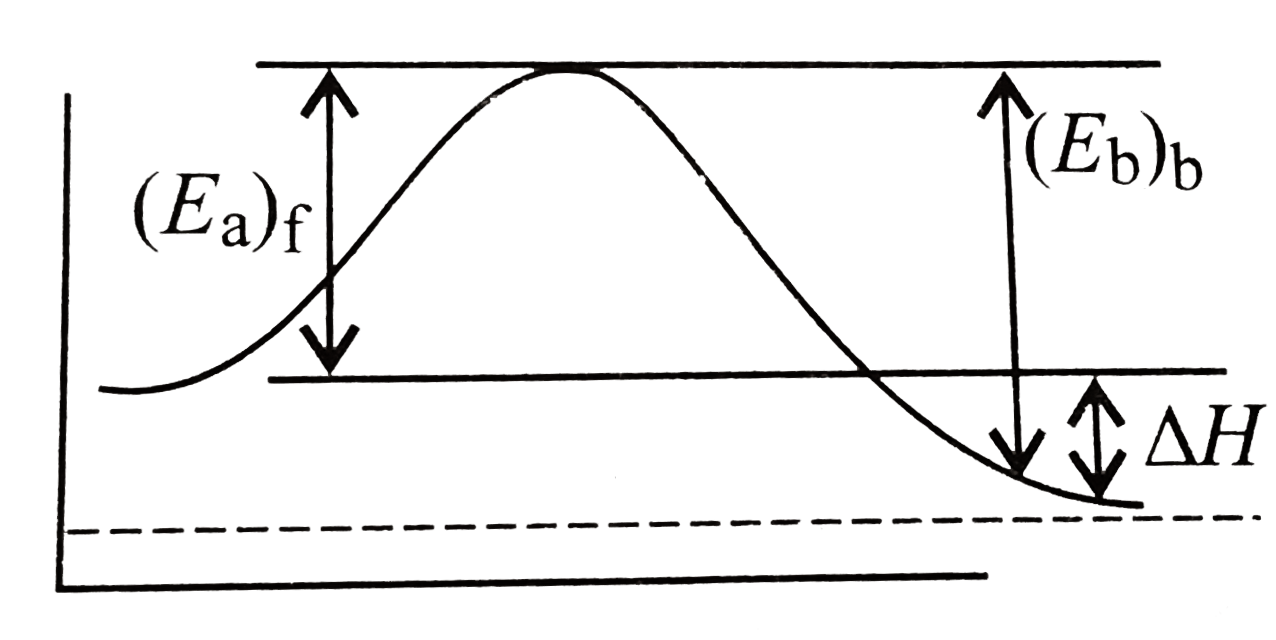A+B→C,ΔH=+60 kJ/mol
Eaf is 150 kJ. What is the activation energy for the backward reaction ?
210 kJ
105 kJ
90 kJ
145 kJ
The correct Answer is:C
To solve the problem of finding the activation energy for the backward reaction, we can follow these steps:
1. Identify the Given Information:
- The reaction is: A+B→C
- The enthalpy change (ΔH) for the reaction is given as +60kJ/mol.
- The activation energy for the forward reaction (Eaf) is given as 150kJ.
2. Understand the Relationship Between Activation Energies and Enthalpy Change:
- The relationship between the activation energy of the forward reaction, the activation energy of the backward reaction, and the enthalpy change is given by the equation:
ΔH=Eaf−Eab
- Here, Eab is the activation energy for the backward reaction.
3. Rearrange the Equation to Solve for Eab:
- We can rearrange the equation to find the activation energy for the backward reaction:
Eab=Eaf−ΔH
4. Substitute the Known Values:
- Now, substitute the known values into the rearranged equation:
Eab=150kJ−60kJ
5. Calculate the Activation Energy for the Backward Reaction:
- Performing the calculation gives:
Eab=150kJ−60kJ=90kJ
6. Conclusion:
- The activation energy for the backward reaction is 90kJ.
Final Answer:
The activation energy for the backward reaction is 90kJ.
---
- The reaction is: A+B→C
- The enthalpy change (ΔH) for the reaction is given as +60kJ/mol.
- The activation energy for the forward reaction (Eaf) is given as 150kJ.
- The relationship between the activation energy of the forward reaction, the activation energy of the backward reaction, and the enthalpy change is given by the equation:
ΔH=Eaf−Eab
- Here, Eab is the activation energy for the backward reaction.
- We can rearrange the equation to find the activation energy for the backward reaction:
Eab=Eaf−ΔH
- Now, substitute the known values into the rearranged equation:
Eab=150kJ−60kJ
- Performing the calculation gives:
Eab=150kJ−60kJ=90kJ
- The activation energy for the backward reaction is 90kJ.
The activation energy for the backward reaction is 90kJ.
Topper's Solved these Questions
- CHEMICAL KINETICSBook:AAKASH INSTITUTE ENGLISHChapter:CHEMICAL KINETICSExercise:ASSIGNMENT (SECTION A : Objective Type Questions)
Explore 50 Videos
- CHEMICAL KINETICSBook:AAKASH INSTITUTE ENGLISHChapter:CHEMICAL KINETICSExercise:ASSIGNMENT (SECTION B : Objective Type Questions)
Explore 20 Videos
- CHEMICAL KINETICSBook:AAKASH INSTITUTE ENGLISHChapter:CHEMICAL KINETICSExercise:Try Yourself
Explore 10 Videos
- CHEMICAL BONDING AND MOLECULAR STRUCTURE Book:AAKASH INSTITUTE ENGLISHChapter:CHEMICAL BONDING AND MOLECULAR STRUCTURE Exercise:Assignment Section J (Aakash Challengers Questions)
Explore 10 Videos
- CHEMISTRY IN EVERYDAY LIFE Book:AAKASH INSTITUTE ENGLISHChapter:CHEMISTRY IN EVERYDAY LIFE Exercise:Assignment ( SECTION - A)
Explore 45 Videos
Similar Questions
The activation energy for the forward reaction X→Y is 60kJmol−1 and ΔH is −20kJmol−1. The activation energy for the reverse reaction is
View SolutionFor the equilibrium,
A(g)→B(g),ΔH is -40 KJ/mol.
If the ratio of the activation energies of the forward (Ef) and reverse (Eb) reactions is 23 then:
View Solution
Knowledge Check
In a hypothetical reaction X→Y, the activation energy for the forward backward reactions are 15 and 9 kJ mol−1 respectively. The potential energy of X is 10 kJ mol−1. Which of the following statement is/are correct?
(i) The threshold energy of the reaction is 25 kJ mol−1
(ii) The potential energy of Y is 16 kJ mol−1
(iii) Heat of reaction is 6 kJ mol−1
The reaction is endothermic.AOnly (i)BOnly (i) and (ii)COnly (ii) and (iii)DAll are correct
The activation energy of exothermic reaction A→B is 80 kJ mol−1 . The heat of reaction is 200kJmol−1. The activation energy for the reactionB→a ( in kJ/mol) will be :
View SolutionAn exothermic reaction A→B has an activation energy of 17kJ per mole of A. The heat of the reaction is 40kJ. Calculate the activation energy for the reverse reaction B→A.
View SolutionA colliison between reactant molecules must occur with a certain minimum energy before it is effective in yielding Product molecules. This minimum energy is called activation energy Ea Large the value of activation energy, smaller the value of rate constant k. Larger is the value of activation energy, greater is the effect of temperature rise on rate constant k.

Ef= Activation energy of forward reaction
Eb= Activation energy of backward reaction
ΔH=Ef−Eb
Ef= threshold energy
The activation eneries for forward and backward reactions in a chemical reaction are 30.5 and 45.4kJmol−1 respectively. The reaction is
View SolutionA colliison between reactant molecules must occur with a certain minimum energy before it is effective in yielding Product molecules. This minimum energy is called activation energy Ea Large the value of activation energy, smaller the value of rate constant k. Larger is the value of activation energy, greater is the effect of temperature rise on rate constant k.

Ef= Activation energy of forward reaction
Eb= Activation energy of backward reaction
ΔH=Ef−Eb
Ef= threshold energy
In a hypothetical reaction A→B, the activation energies for the forward and backward reactions are 15 and 9kJmol−1, respectively. The potential energy of A is 10kJmol−1. Which of the following is wrong?
View SolutionAn exothermic reaction X→Y has an activation energy of 90kJmol−1 of X and the heat of reaction is 250kJ. Find the activation energy of the reaction Y→X.
View SolutionIn an exothermic reaction X→Y, the activation energy is 100kJmol−1 of X. The enthalphy of the reaction is −140kJmol−1. The activation energy of the reverse reaction Y→X is

View SolutionA : For exothermic reaction,
ΔH=Ea (forward) −Ea (backward)
R : The value of activation energy for forward direction is less than activation energy for backward reaction.
View Solution